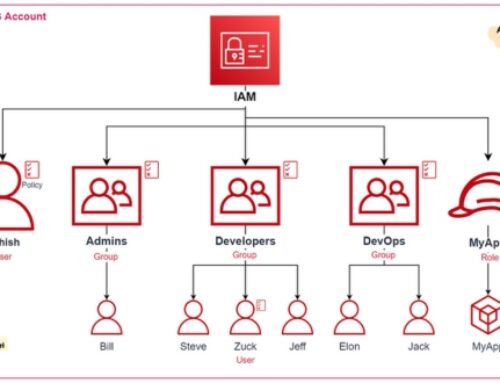Introduction to AWS AI and Chatbot Development

Overview of Artificial Intelligence (AI) on AWS
In the dynamic landscape of modern applications, Artificial Intelligence (AI) has emerged as a transformative force, revolutionizing the way businesses operate and users interact with technology. At the forefront of this AI revolution stands Amazon Web Services (AWS), providing a robust and comprehensive platform for AI development.
- Defining AI:
Artificial Intelligence refers to the simulation of human intelligence in machines, enabling them to perform tasks that typically require human cognition. These tasks encompass a wide range, from natural language processing and image recognition to complex decision-making processes.
- Significance of AI in Modern Applications:
The significance of AI lies in its ability to empower applications with capabilities that were once exclusive to human intelligence. From predictive analytics and personalized recommendations to automation of mundane tasks, AI on AWS unlocks a realm of possibilities for developers and businesses alike.
- AWS as a Catalyst for AI Innovation:
As a leading cloud service provider, AWS has positioned itself as a catalyst for AI innovation. The platform offers a suite of services that cater to diverse AI needs, providing tools for machine learning, natural language processing, computer vision, and more. Developers can harness the power of AWS to build, train, and deploy AI models at scale.
Importance of Chatbots in Customer Engagement
- Elevating User Experience:
Chatbots have become integral to modern customer engagement strategies, transforming the way businesses interact with their audience. These conversational agents, powered by AI, provide instant and personalized responses, elevating the overall user experience.
- Support Services Reinvented:
Beyond mere interactions, chatbots have reinvented customer support services. They offer 24/7 availability, quick query resolution, and a seamless conversational interface, reducing customer wait times and enhancing satisfaction.
- Benefits of Integrating Chatbots with AI on AWS:
The synergy of chatbots and AI on AWS yields a multitude of benefits. Businesses can leverage natural language understanding, sentiment analysis, and context-aware responses to create chatbots that not only understand user intent but also provide meaningful and contextually relevant information.
In essence, the integration of AI and chatbots on AWS marks a paradigm shift in the way applications are developed and customer engagement is approached. It empowers developers to create intelligent, human-like interactions that drive user satisfaction and streamline business processes.
AWS AI Services Overview

Amazon Lex for Conversational Interfaces
- Overview of Lex:
At the heart of AWS’s AI services is Amazon Lex, a powerful tool for crafting conversational interfaces and chatbots. Lex democratizes the creation of natural language understanding (NLU) capabilities, making it accessible to developers with varying levels of AI expertise. It empowers developers to build applications that can understand and respond to user input in a conversational manner.
- Integration with AWS Services:
What sets Lex apart is its seamless integration with other AWS services, allowing developers to enhance their applications by incorporating natural language processing. By leveraging Lex, developers can effortlessly infuse conversational abilities into their solutions, opening up possibilities for voice-activated assistants, intelligent customer support chatbots, and more. This integration amplifies the capabilities of Lex, making it a versatile tool in the AI developer’s toolkit.
Amazon Polly for Text-to-Speech Conversion
- Introduction to Polly:
Amazon Polly, another standout AI service, redefines user interaction by transforming written text into lifelike speech. Using advanced deep learning technologies, Polly generates expressive and natural-sounding speech, enhancing the auditory experience for users interacting with applications.
- Use Cases and Benefits:
The applications of Polly span diverse domains. From enhancing accessibility features for visually impaired users to creating interactive voice responses (IVRs) in customer support systems, Polly’s text-to-speech conversion capabilities are transformative. Its benefits extend beyond mere convenience, offering a more engaging and inclusive user experience. Polly’s integration into applications contributes to improved user retention and satisfaction.
Amazon Rekognition for Image and Video Analysis
- Exploring Rekognition:
For image and video analysis, Amazon Rekognition stands as a formidable AI service. Employing advanced deep learning algorithms, Rekognition can extract rich insights from visual content. Its capabilities include facial recognition, object detection, content moderation, and more, making it an invaluable tool for applications requiring visual understanding.
- Applications in Various Domains:
Rekognition’s applications are vast. In the realm of facial recognition, it finds use in security systems and identity verification. Object detection capabilities are employed in inventory management and surveillance. Content moderation features contribute to maintaining the integrity of online platforms by identifying and flagging inappropriate content. Rekognition’s adaptability positions it as a key player in shaping how applications interpret and utilize visual data.
By delving into the nuances of these AWS AI services, developers gain insights into the specific features, use cases, and best practices for implementation. This comprehensive understanding enables developers to harness the full potential of Lex, Polly, and Rekognition, fostering the creation of intelligent, interactive, and visually perceptive applications that resonate with users across diverse contexts and industries.
Developing Chatbots with AWS AI Services

Building Conversational Interfaces with Amazon Lex
- Step-by-step Guide to Chatbot Creation:
Embarking on the journey of creating conversational interfaces, developers can leverage Amazon Lex to build intelligent chatbots. The process involves defining intents, which represent the user’s intention, along with slots that capture specific details. Utterances, the phrases users might use, refine the chatbot’s understanding. This meticulous approach ensures the chatbot comprehends and responds appropriately to a wide array of user inputs.
- Integration with Messaging Platforms:
To extend the reach of chatbots, integration with popular messaging platforms is pivotal. Amazon Lex facilitates seamless integration with platforms such as Slack and Facebook Messenger, broadening the accessibility of chatbots. This integration not only enhances user engagement but also ensures that the chatbots become an integral part of users’ preferred communication channels.
Enhancing User Experience with Amazon Polly
- Text-to-Speech Capabilities:
Amazon Polly elevates the user experience by adding a layer of auditory interaction to chatbots. Implementing text-to-speech capabilities, developers can create chatbots that not only understand but also respond in natural-sounding speech. This feature is instrumental in making interactions more dynamic, particularly in scenarios where visual or text-based communication might be limiting.
- Customization for Personalized Interactions:
The flexibility of Amazon Polly allows developers to customize voices and pronunciation, tailoring the auditory experience to match the brand’s personality or the preferences of individual users. This personalization contributes to a more immersive and engaging interaction, fostering a connection between users and chatbots.
Visual Recognition with Amazon Rekognition
- Integrating Rekognition into Chatbots:
Taking chatbots to the next level involves incorporating visual recognition capabilities through Amazon Rekognition. This allows chatbots to analyze and understand visual content, opening up a plethora of applications. Developers can seamlessly integrate Rekognition into chatbots to perform tasks like image and video analysis, creating a more comprehensive user experience.
- Use Cases and Applications:
The integration of Rekognition into chatbots unveils various use cases. In e-commerce, chatbots can utilize product recognition to provide users with information about items based on images. Content moderation becomes more robust with Rekognition, ensuring that user-generated content aligns with community guidelines. Additionally, in security applications, Rekognition’s facial recognition capabilities contribute to identity verification.
By intricately weaving together Amazon Lex, Polly, and Rekognition, developers can craft chatbots that transcend basic conversational abilities. These chatbots become intelligent companions capable of understanding natural language, delivering information through speech, and even interpreting visual cues, thereby revolutionizing user interactions in diverse domains.
Deploying and Scaling AI Chatbots on AWS
Deployment Options for AI Chatbots
- Choosing Between Serverless and Containerized Deployments:
The deployment architecture plays a pivotal role in the scalability and efficiency of AI chatbots. Developers are faced with the decision of choosing between serverless and containerized deployments. Serverless architectures, exemplified by AWS Lambda, offer advantages such as automatic scaling and reduced operational overhead. On the other hand, containerized deployments using services like Amazon ECS provide a more customizable environment for complex applications. Evaluating the specific needs of the chatbot application is crucial in making this foundational decision.
- Utilizing AWS Lambda and Amazon ECS:
For serverless deployments, AWS Lambda emerges as a prominent choice. Its event-driven nature allows chatbots to effortlessly scale based on demand, ensuring optimal resource utilization. Containerized deployments, facilitated by Amazon ECS (Elastic Container Service), offer a balance between flexibility and scalability. ECS enables the efficient orchestration of containerized chatbot applications, providing a robust infrastructure foundation.
Monitoring and Performance Optimization
- Implementing Monitoring and Logging Solutions:
Effective monitoring is imperative for maintaining the health and performance of AI chatbots. AWS provides a suite of tools, including Amazon CloudWatch, to implement comprehensive monitoring solutions. CloudWatch allows developers to collect and track metrics, detect anomalies, and set up alarms for proactive issue resolution. Coupled with AWS CloudTrail, which records API calls and provides actionable insights, developers gain a holistic view of chatbot interactions.
- Strategies for Optimizing Resource Usage and Scaling:
Optimizing resource usage is a continual process in the lifecycle of AI chatbots. Strategies for performance optimization involve analyzing resource consumption patterns, identifying bottlenecks, and implementing changes accordingly. AWS offers Auto Scaling features that automatically adjust the capacity of chatbot deployments based on real-time demand. Leveraging these features ensures that chatbots scale seamlessly to handle varying workloads, providing a responsive and efficient user experience.
Deploying and scaling AI chatbots on AWS is a nuanced process that demands careful consideration of deployment options and meticulous attention to performance optimization. Whether opting for serverless simplicity with Lambda or embracing containerization with ECS, the chosen architecture should align with the chatbot’s requirements. Additionally, robust monitoring and optimization strategies are essential for maintaining optimal performance and responsiveness as chatbots navigate the dynamic landscape of user interactions.
Security and Compliance Considerations
Data Privacy and Security in AI Chatbots
- Ensuring Compliance with Data Protection Regulations:
As AI chatbots interact with users and handle sensitive information, adherence to data protection regulations is paramount. Developers must stay abreast of global and regional data privacy laws, such as GDPR, HIPAA, or CCPA, depending on the target audience and application context. AWS provides a robust framework to assist in compliance efforts, offering services like AWS Key Management Service (KMS) for encryption and AWS Identity and Access Management (IAM) for access control.
- Implementing Encryption and Access Controls:
To fortify data privacy and security, the implementation of encryption and access controls is indispensable. AWS offers encryption solutions for data both in transit and at rest. Developers can leverage services like AWS Key Management Service (KMS) for managing encryption keys and enforce strict access controls through IAM policies. By adopting a defense-in-depth approach, AI chatbots can safeguard sensitive user data from unauthorized access.
User Authentication and Authorization
- Integrating Identity Management Solutions like Amazon Cognito:
User authentication is a critical facet of securing AI chatbots. Amazon Cognito, an AWS service, simplifies the process of adding user sign-up, sign-in, and access control to applications. Integrating Cognito enables developers to manage user identities securely, supporting multiple authentication providers such as social identity providers or enterprise directories. This ensures that only authenticated users interact with the chatbot, bolstering overall security.
- Enforcing Role-Based Access Control (RBAC):
Role-Based Access Control (RBAC) is fundamental to defining and enforcing access policies for different user roles. AWS IAM allows developers to implement RBAC, assigning specific permissions to users or groups based on their roles. By meticulously configuring IAM policies, developers can control not only who has access to the chatbot but also the actions they are authorized to perform. This granular level of access control enhances security by minimizing the attack surface and preventing unauthorized actions.
Security and compliance considerations are integral to the responsible development and deployment of AI chatbots. By prioritizing data privacy, implementing robust encryption practices, and integrating identity management solutions like Amazon Cognito, developers can ensure that their chatbots adhere to regulatory standards. Furthermore, the enforcement of Role-Based Access Control (RBAC) through AWS IAM establishes a secure environment, fostering user trust and confidence in AI chatbot interactions.
Testing and Debugging AI Chatbots
Test Automation for Chatbot Development
- Implementing Automated Testing Frameworks:
In the realm of AI chatbot development, automated testing is indispensable for ensuring robust functionality and optimal performance. Developers can leverage various testing frameworks, such as AWS Device Farm for mobile chatbots or popular open-source frameworks like Selenium for web-based chatbots. Automated tests span across different levels:
- Unit Tests: Focused on individual components or functions, unit tests validate the correctness of specific features within the chatbot’s codebase.
- Integration Tests: These tests assess the interaction between different components, ensuring seamless communication and functionality across the entire system.
- End-to-End Tests: Conducted from the user’s perspective, end-to-end tests evaluate the entire chatbot system, including user inputs, AI processing, and output generation. AWS provides services like AWS Lambda for serverless testing, allowing developers to simulate real-world scenarios.
Automated testing not only accelerates the development lifecycle but also enhances the reliability of AI chatbots by catching potential issues early in the development process.
Debugging Techniques for AI Models
Utilizing Debugging Tools and Techniques:
Debugging AI models in chatbots involves identifying and rectifying errors that may arise during user interactions. AWS offers a suite of tools and techniques to streamline this process:
- AWS CloudWatch Logs: By logging relevant information during chatbot interactions, developers gain valuable insights into the system’s behavior. CloudWatch Logs allow for real-time monitoring and analysis of log data, aiding in the identification of errors or unexpected behaviors.
- Amazon CloudWatch Debugger: This tool enables developers to set breakpoints within the Lambda function code, allowing them to inspect variables, step through code, and identify issues during runtime.
- X-Ray for Tracing: AWS X-Ray provides end-to-end tracing, allowing developers to visualize the entire journey of a user request through the chatbot. This aids in pinpointing bottlenecks, errors, or unexpected behaviors within the system.
By combining automated testing frameworks with robust debugging tools, developers can ensure the reliability and performance of AI chatbots. The iterative nature of testing and debugging is crucial for refining the chatbot’s capabilities, enhancing user experiences, and maintaining a high level of user satisfaction.
Future Trends in AWS AI and Chatbot Development
Advances in Natural Language Processing (NLP)
- Exploring Emerging Technologies and Trends in NLP:
As AI continues to evolve, Natural Language Processing (NLP) is poised for remarkable advancements. AWS, being at the forefront of AI innovation, is likely to incorporate cutting-edge NLP technologies into its services. Key trends include:
- Conversational AI with Context Awareness: Future chatbots are anticipated to exhibit a deeper understanding of context, allowing for more natural and context-aware conversations. Enhanced context awareness enables chatbots to comprehend user intents and respond with greater accuracy.
- Multilingual and Cross-Language Capabilities: With the global reach of businesses, multilingual chatbots are becoming increasingly essential. AWS is expected to introduce NLP models capable of handling diverse languages seamlessly, facilitating effective communication on a global scale.
- Emotion Recognition: The integration of emotion recognition into NLP models will enable chatbots to detect and respond to user emotions. This innovation is poised to elevate user engagement by tailoring responses based on emotional cues.
Integration with Voice Assistants and IoT Devices
Predictions for Integration with Voice Assistants and IoT Devices:
The fusion of chatbots with voice assistants and Internet of Things (IoT) devices represents a pivotal trend in the future of AWS AI development:
- Voice-Enabled Chatbot Experiences: Voice-enabled chatbots, integrated with platforms like Amazon Alexa, will become increasingly prevalent. Users will interact with chatbots using voice commands, expanding the range of applications to smart homes, automobiles, and various IoT-connected devices.
- IoT-Driven Chatbot Interactions: The convergence of chatbots with IoT devices will unlock new possibilities. Chatbots could seamlessly interact with smart home devices, provide real-time updates from IoT sensors, and offer personalized assistance based on IoT data.
- Edge AI for Low-Latency Interactions: With the rise of edge computing, AWS is likely to enhance AI capabilities at the edge for low-latency interactions. This is especially crucial for scenarios where real-time responses are essential, such as in IoT applications.
The future of AWS AI and chatbot development holds exciting possibilities, driven by continuous innovations in NLP, integration with voice assistants, and the expanding ecosystem of IoT devices. As these trends unfold, businesses leveraging AWS services can anticipate more sophisticated and context-aware chatbot experiences, leading to enhanced user engagement and satisfaction.
Conclusion: Driving Innovation with AWS AI and Chatbot Development
In the fast-paced landscape of technology, the fusion of Artificial Intelligence (AI) and Chatbot Development has emerged as a catalyst for innovation, redefining the way businesses interact with users. Amazon Web Services (AWS), as a pioneering force in cloud computing and AI, stands at the forefront of this transformative journey, unleashing a wave of possibilities that are reshaping customer engagement and user experiences.
Unleashing the Power of Conversational Interfaces:
At the core of this innovation is the capability to create conversational interfaces with Amazon Lex. AWS enables developers to build chatbots that not only understand user intent but also engage in natural, context-aware conversations. This has transcended traditional customer interactions, allowing businesses to provide personalized and efficient services, ultimately elevating the overall user experience.
Enriching Conversations with Amazon Polly:
The integration of Amazon Polly, with its text-to-speech conversion capabilities, has added a human touch to chatbot interactions. The ability to generate lifelike speech from text enhances the richness of conversations, making them more engaging and accessible. This not only serves practical applications but also contributes to creating a more inclusive digital environment.
Visualizing the Future with Amazon Rekognition:
The incorporation of Amazon Rekognition has propelled chatbots into the realm of visual recognition, enabling them to analyze images and videos seamlessly. From product recognition to content moderation, this advancement opens avenues for chatbots to comprehend and respond to visual cues, fostering a more holistic and interactive user experience.
Scaling and Securing the Future of Chatbot Deployment:
As businesses strive for scalability and reliability, AWS offers versatile deployment options for AI chatbots. Whether opting for serverless architectures or containerized deployments, the flexibility provided by AWS Lambda and Amazon ECS ensures that chatbot applications can scale dynamically to meet varying workloads.
However, innovation comes hand-in-hand with responsibility. In the realm of AI and chatbot development, considerations for security and compliance play a pivotal role. AWS places a strong emphasis on data privacy, encryption, and access control, ensuring that AI chatbots are not just innovative but also aligned with the highest standards of security and compliance.
Towards a Future of Intelligent Conversations:
Looking ahead, the future of AWS AI and Chatbot Development holds promises of continuous evolution. Advancements in Natural Language Processing (NLP) are set to redefine the boundaries of conversational AI. The integration of chatbots with voice assistants, such as Amazon Alexa, and their synergy with a vast array of IoT devices will unlock new dimensions of user engagement.
In conclusion, the journey of driving innovation with AWS AI and Chatbot Development is an ongoing narrative. It’s a story marked by the seamless integration of cutting-edge technologies, a commitment to user-centric experiences, and a vision that extends beyond conventional boundaries. As businesses embrace these advancements, they embark on a path where AI-driven chatbots become not just tools but companions in the digital landscape, enriching interactions, and reshaping the future of customer engagement. With AWS as the enabler, the era of intelligent conversations is well underway.
AWS provides a robust cloud platform for developing, deploying, and scaling AI-driven chatbots, offering a comprehensive set of services and tools.
Amazon Lex is a service for building chatbots and conversational interfaces using natural language understanding, making interactions more intuitive.
Amazon Polly is utilized for text-to-speech conversion, allowing developers to enhance chatbot interactions with natural-sounding speech.
Yes, Amazon Rekognition enables chatbots to analyze images and videos, supporting features like facial recognition and object detection.
AWS offers deployment options, including serverless architectures and containerized deployments using services like AWS Lambda and Amazon ECS for scalability.








